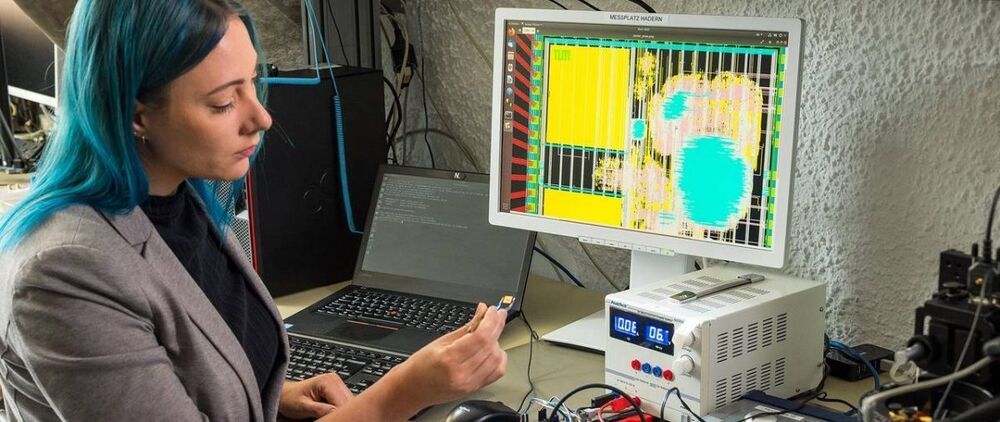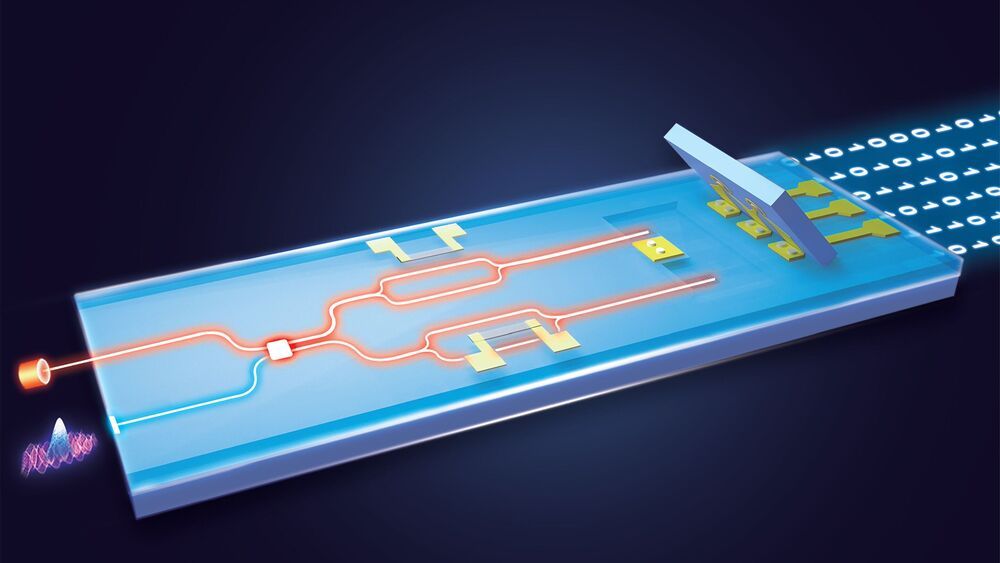Older devices and browsers could run into trouble on September 30.



Long distance quantum communication over 600 km of fiber unlocked!
Toshiba in partnership with the Japanese Tohoku University Hospital have achieved a new milestone on the road towards the quantum internet — the research team encrypted the human genome and sent it over a quantum-secure connection over 600 km of fiber.

A blockchain-based initiative from the United States Air Force will employ Constellation’s Hypergraph Network to provide data security with the Department of Defense’s commercial partners.
In a Thursday announcement, Constellation said it had been working with Kinnami Software Corporation to develop an end-to-end data security solution using blockchain encryption and distributed data management for the United States Transportation Command, Air Mobility Command’s 618th Air Operations Center, and a Civil Reserve Air Fleet partner. According to the platform, its goal is to securely exchange data with commercial partners on missions involving the operations of aircraft and ships under contract to the Department of Defense, or DoD.
The United States Transportation Command, or USTRANSCOM, allows authorities — including those in the 618th — to coordinate missions using available resources from both the military and private sector. Constellation Network’s solution may have the potential to improve the existing cybersecurity and general effectiveness.

The goal is to pre-empt the fall of traditional cryptography likely to follow the quantum revolution.
A research team with the Technical University of Munich (TUM) have designed a quantum cryptography chip aimed at the security demands of the quantum computing revolution. The RISC-V chip, which was already sent to manufacturing according to the researchers’ design, aims to be a working proof of concept for protecting systems against quantum computing-based attacks, which are generally considered to be one of the most important security frontiers of the future. Alongside the RISC-V based hardware implementation (which includes ASIC and FPGA structures), the researchers also developed 29 additional instructions for the architecture that enable the required workloads to be correctly processed on-chip.
Traditional cryptography is generally based on both the sender and receiver holding the same “unlock” key for any given encrypted data. These keys (which may include letters, digits, and special characters) have increased in length as time passes, accompanying increases in hardware performance available in the general computing sphere. The idea is to thwart brute-force attacks that would simply try out enough character combinations that would allow them to eventually reach the correct answer that unlocks the encrypted messages’ contents. Given a big enough size of the security key (and also depending on the encryption protocol used), it’s virtually impossible for current hardware — even with the extreme parallelization enabled by the most recent GPUs — to try out enough combinations in a short enough timeframe to make the effort worthwhile.

‘Some forms of encryption used today can be broken by future large-scale quantum computers, which drives a search for alternatives’
“Some forms of encryption used today can be broken by future large-scale quantum computers, which also drives a search for alternatives,” Ling said.
In a canned statement, the NUS said AWS will gain access to the university’s National Quantum-Safe Network, a vendor-neutral platform for developing technology and integrating some of it into local fiber networks.
“The understanding that we are using quantum communications technology to support experiments using existing fiber is correct,” AWS ASEAN managing director Tan Lee Chew told The Register.


As pervasive as they are in everyday uses, like encryption and security, randomly generated digital numbers are seldom truly random.
So far, only bulky, relatively slow quantum random number generators (QRNGs) can achieve levels of randomness on par with the basic laws of quantum physics, but researchers are looking to make these devices faster and more portable.
In Applied Physics Letters, scientists from China present the fastest real-time QRNG to date to make the devices quicker and more portable. The device combines a state-of-the-art photonic integrated chip with optimized real-time postprocessing for extracting randomness from quantum entropy source of vacuum states.

“Because nothing can protect hardware, software, applications or data from a quantum-enabled adversary, encryption keys and data will require re-encrypting with a quantum-resistant algorithm and deleting or physically securing copies and backups.” v/@preskil… See More.
To ease the disruption caused by moving away from quantum-vulnerable cryptographic code, NIST has released a draft document describing the first steps of that journey.

“We’re excited to share that AWS has acquired Wickr, an innovative company that has developed the industry’s most secure, end-to-end encrypted, communication technology,” Stephen Schmidt, Amazon Web Services’ vice president, wrote. With a nod to the company’s ever-deepening relationships with the military, and Washington in general, Schmidt added that Wickr’s features give “security conscious enterprises and government agencies the ability to implement important governance and security controls to help them meet their compliance requirements.” Schmidt himself has a background in this space: his LinkedIn profile notes he spent a decade at the FBI.
Wickr’s app — like secure messaging competitor Signal — has been popular with journalists and whistleblowers; it’s also been a go-to for criminals, Motherboard notes. It’s unclear if the proximity to the tech monolith will impact the app’s popularity for free users.
In Amazon’s case, Schmidt indicates the acquisition was at least partially influenced by the need to preserve information security while working remotely. “With the move to hybrid work environments, due in part to the COVID-19 pandemic, enterprises and government agencies have a growing desire to protect their communications,” he wrote.

Cyber criminals are increasingly using virtual machines to compromise networks with ransomware.
By using virtual machines as part of the process, ransomware attackers are able to conduct their activity with additional subtlety, because running the payload within a virtual environment reduces the chances of the activity being discovered – until it’s too late and the ransomware has encrypted files on the host machine.
During a recent investigation into an attempted ransomware attack, cybersecurity researchers at Symantec found the ransomware operations had been using VirtualBox – a legitimate form of open-source virtual machine software – to run instances of Windows 7 to aid the installation of ransomware.